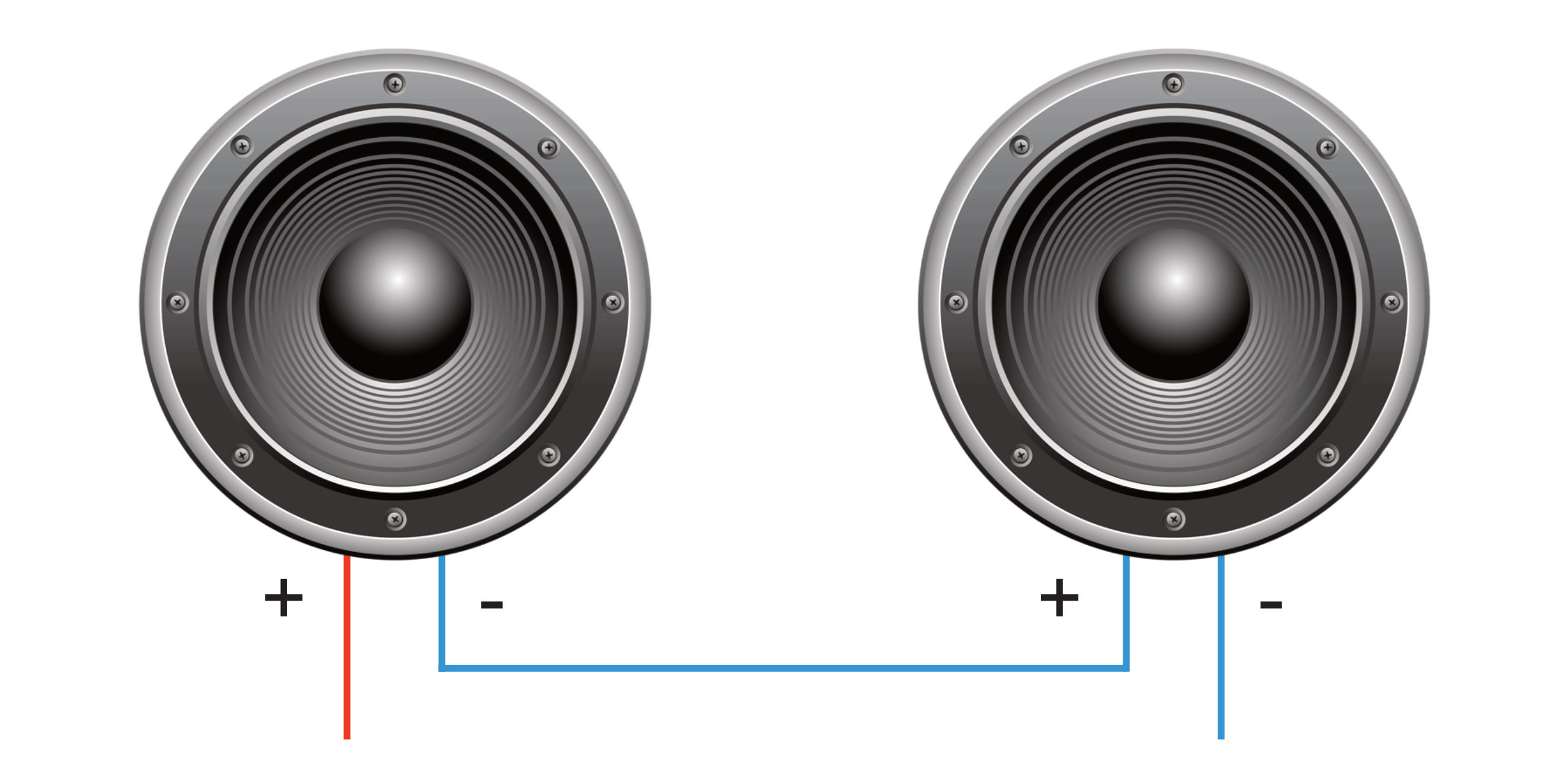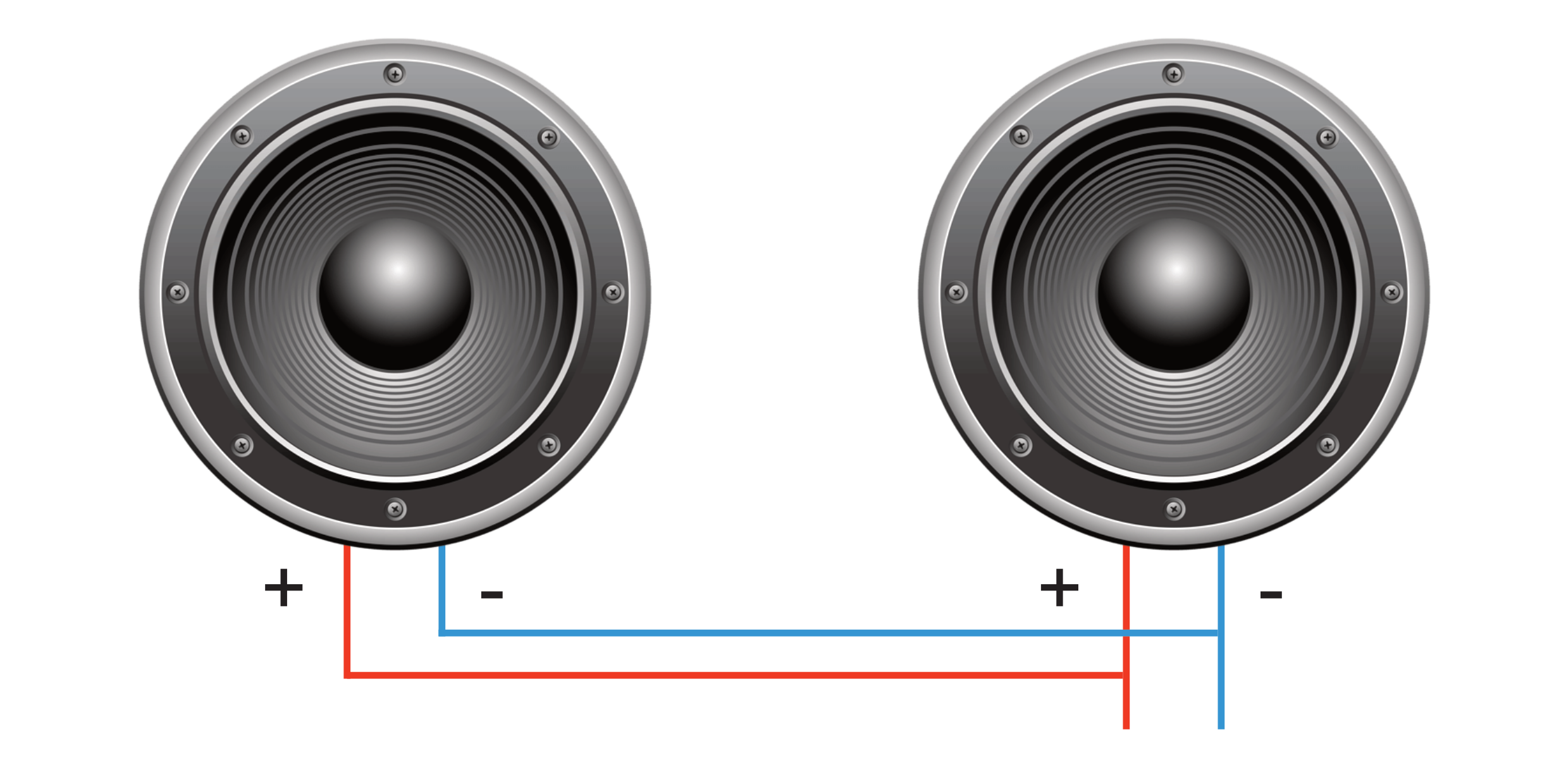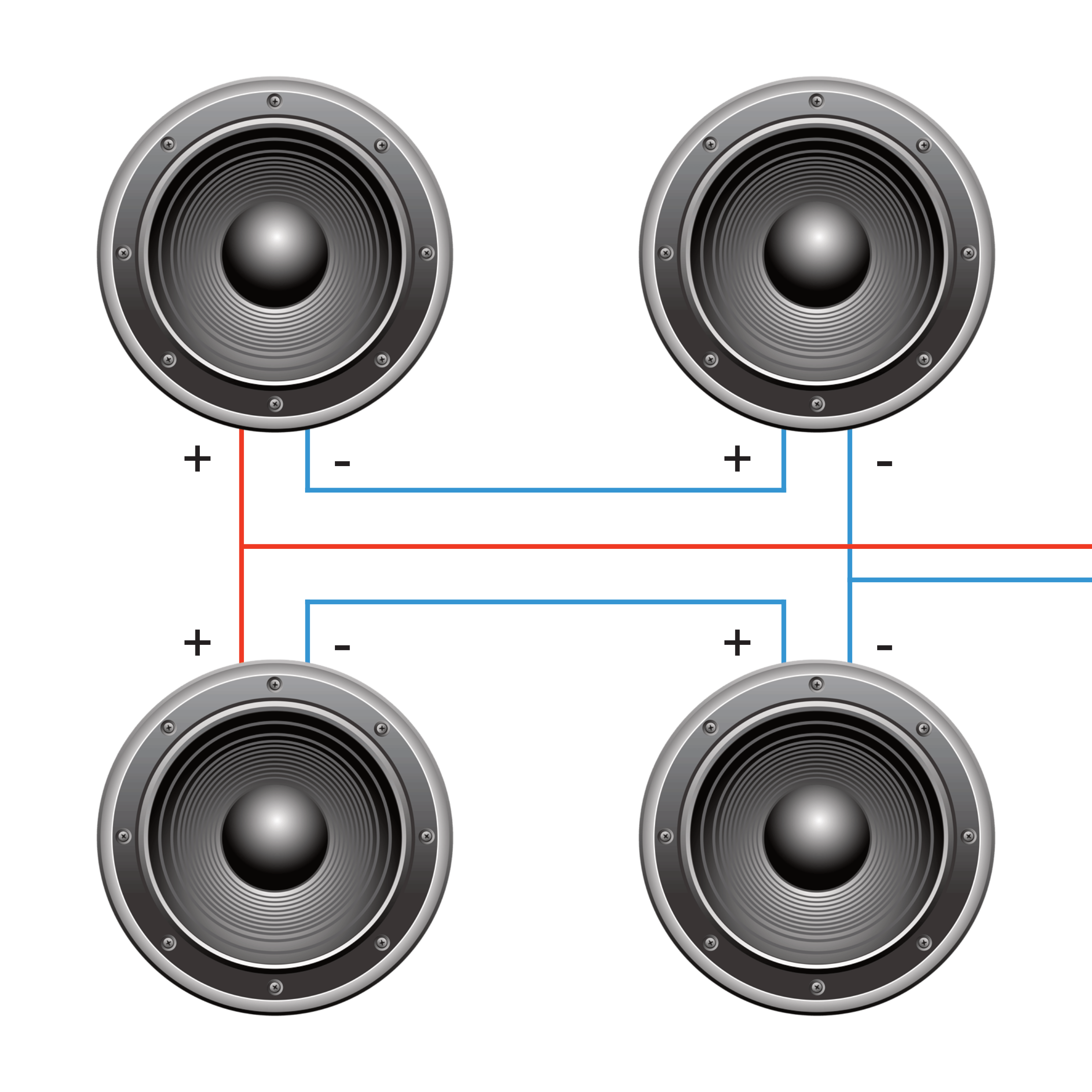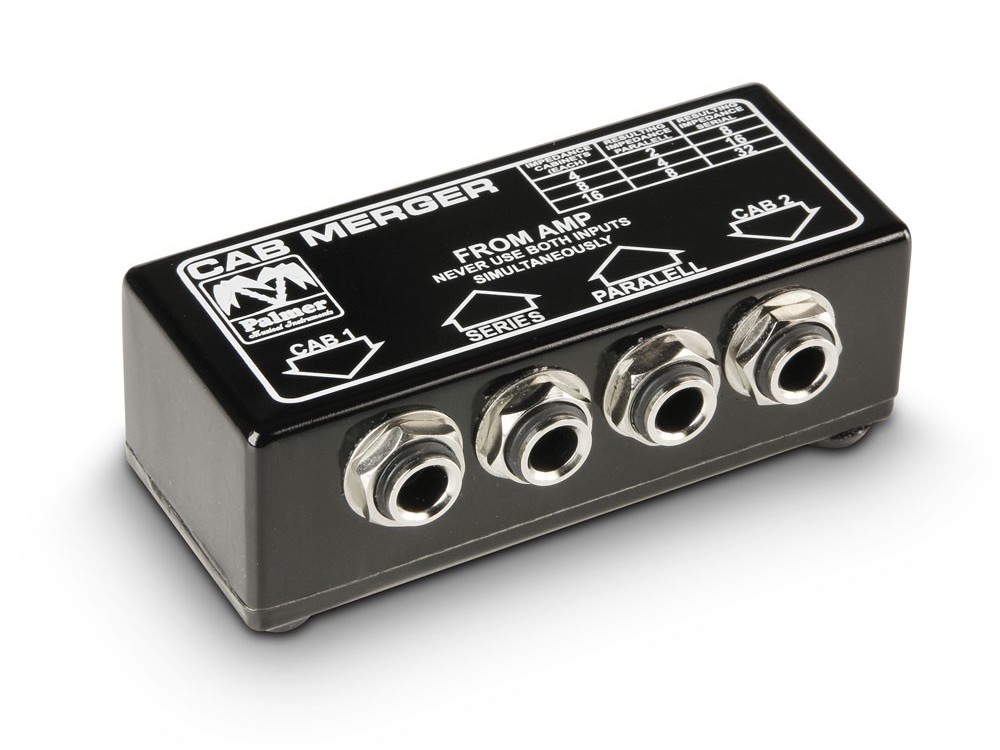Connecting multiple cabinets to the AMP1: a guide
The AMP1 has two speaker outputs: one rated 8 ohms, and the other 16 ohms. If the impedance of the connected cabinet(s) matches that at the output of the AMP1, the AMP1 produces the full output of 100 watts sine or 150 watts peak.
The aim should always be to match the total impedance of the connected cabinet(s) with the impedance specified for the loudspeaker output on the AMP1.
However, there are cases, especially when connecting several loudspeakers, in which the impedance of the speaker(s) does not match that of the speaker out on the AMP1. In such a case, the following rule applies - and not just for the AMP1, but also for classic tube amps, by the way:
Circuit options
When connecting several cabinets, there are three options for interconnecting the individual loudspeakers: parallel connection, series connection, or a combination of both.
Series connection
When connected in series, the total impedance - Ωges - results from adding the individual impedances (ΩA and ΩB):
Ωges = ΩA + ΩB
The total output is reduced by increasing the total resistance, but the volume usually increases by increasing the speaker surface.
Parallel connection
When two loudspeakers are connected in parallel, the total impedance - Ωtot - is obtained by dividing the product of the individual impedances (ΩA and ΩB) by their sum:
Ωges = ΩA × ΩB / (ΩA + ΩB)
Two speakers with equal impedance connected in parallel have half the impedance. If two loudspeakers are connected in parallel, the amplifier output - Pges - is divided between the loudspeakers PA and PB, but the total output does not change. The distribution of the power to the loudspeakers can be calculated using the following formulas:
If two loudspeakers are connected in parallel, the amplifier output - Pges - is divided between the loudspeakers PA and PB, but the total output does not change. The distribution of the power to the loudspeakers can be calculated using the following formulas:
PA = Pges × Ωges / ΩA
PB = Pges × Ωges / ΩB
Common cabinet combinations
Eight and 16 ohms are common impedance ratings for guitar speakers. There are also 4-ohm speakers, but these are generally only used in 2x12" or 4x12" cabinets and rarely in 1x12" cabs. Here you can find tips for connecting two cabinets with non-standard impedance ratings:
2 x 16 ohms
If you have two 16 ohm speaker boxes, connect them together in parallel. This way, you get a total load of 8 ohms. You should connect this connection to the 8 ohm output of the AMP1.
Delete2 x 8 ohms
If you have two 8 ohm loudspeakers, connect both loudspeakers in series. The resulting connection, with a total load of 16 ohms, is connected to the 16 ohm output of the AMP1.
Delete1 x 8 ohms + 1 x 16 ohms
If you have an 8 ohm and a 16 ohm speaker cabinet, connect the speakers in series. This way, you get 24 ohms as a total load. You should connect this connection to the 16 ohm output of the AMP1. The output stage still produces around 80 watts in this scenario. With the additional speaker surface of the two speakers, it is still louder than with just one cabinet and a 100 watt power amplifier. The output stage of the AMP1 works perfectly in such a case.
Delete2 x 4 ohms
If you have two 4 ohm loudspeakers, connect the loudspeakers in series. The resulting connection, with a total load of 8 ohms, should be connected to the 8 ohm output of the AMP1.
Delete1 x 8 ohms + 1 x 4 ohms
If you have an 8 ohm and a 4 ohm speaker cab, connect the two speakers in series. This gives you 12 ohms as a total load. You should connect this connection to the 8 ohm output of the AMP1. The output stage will still produce around 80 watts in this scenario. With the additional speaker surface of the two speakers, it is still louder than with just one cab and a 100 watt power amplifier. The output stage of the AMP1 works perfectly in such a case.
DeleteTotal load less than 8 ohms: CAUTION!
In contrast to classic tube amps, the AMP1 does not run the risk of breaking if the speaker impedance is too low. Nevertheless, depending on the volume you're playing at, the power amplifier will possibly generate peaks that can exceed the power amplifier limit of 150 watts. In this case, the overload protection of the power amplifier switches off the sound for some milliseconds.
Caution: With 4x12" cabinets, the internal circuit can often be switched using a toggle switch or slide switch. When connecting a 4x12" cab that can be switched from 4 to 16 ohms, make sure that it is set to 16 ohms and is connected to the 16 ohm output of the AMP1 so that there can be no dropouts due to the protective circuit.
And last but not least: a tip
Not all cabinets have both a serial and a parallel output, like the BluGuitar cabinets. In order to always be able to connect two cabinets in series as well as in parallel, Palmer offers a very useful little helper: the CAB M Merger. With its help, two guitar cabinets can be connected in parallel or in series in order to connect them to one amplifier output.

